Abstract
Cesium-accumulating bacteria, strains CS98 and CS402, were isolated from soil by a radioactive autoradiographic method using 137Cs. These strains displayed the rod-coccus growth cycle and contained mesodiaminopimelic acid, mycolic acids, and tuberculostearic acids. The major menaquinone of CS98 was MK-8(H2). On the basis of these characteristics, strain CS98 was identified as Rhodococcus erythropolis and strain CS402 was classified in the genus Rhodococcus. The maximum values of cesium removal efficiencies in the liquid culture containing 10 mumol of cesium per liter for strains CS98 and CS402 were 90 and 47%, respectively. The maximum cesium contents in strains CS98 and CS402 were 52.0 and 18.8 mumol/g (dry weight) of cells, respectively. Maximum values of cesium concentration factors for strains CS98 and CS402 were 3.5 x 10(4) and 3.6 x 10(3), respectively.
Full text
PDF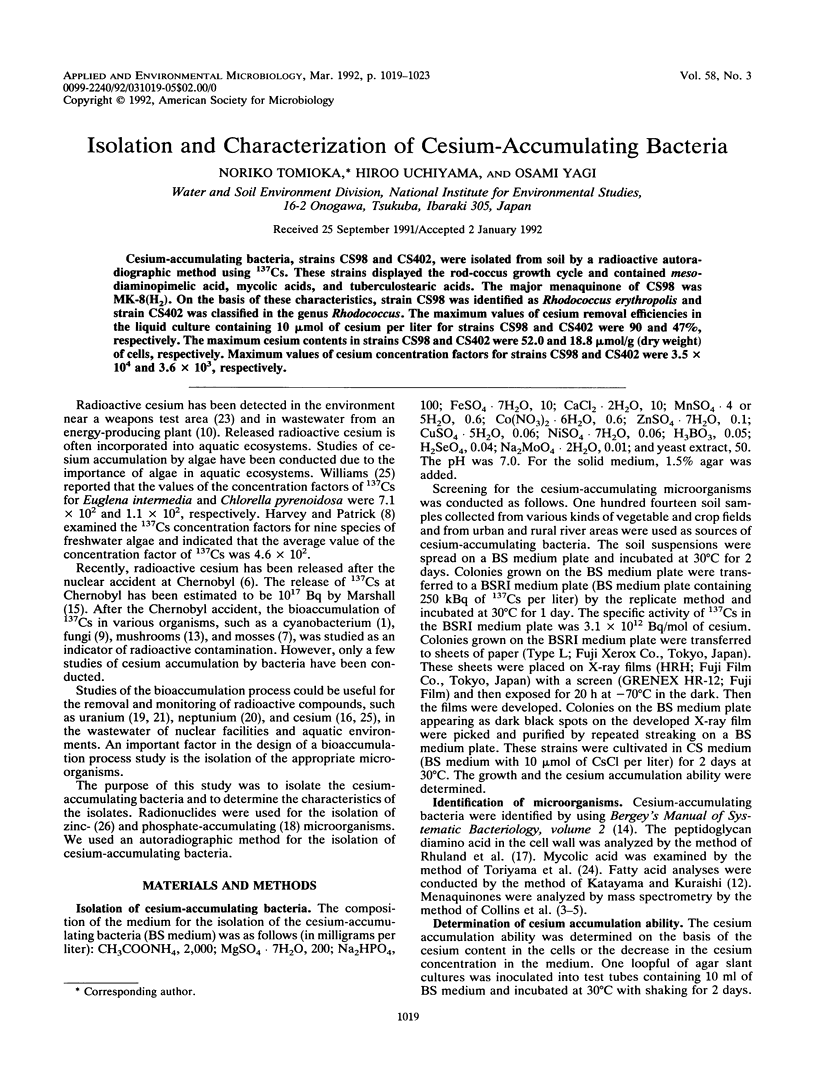
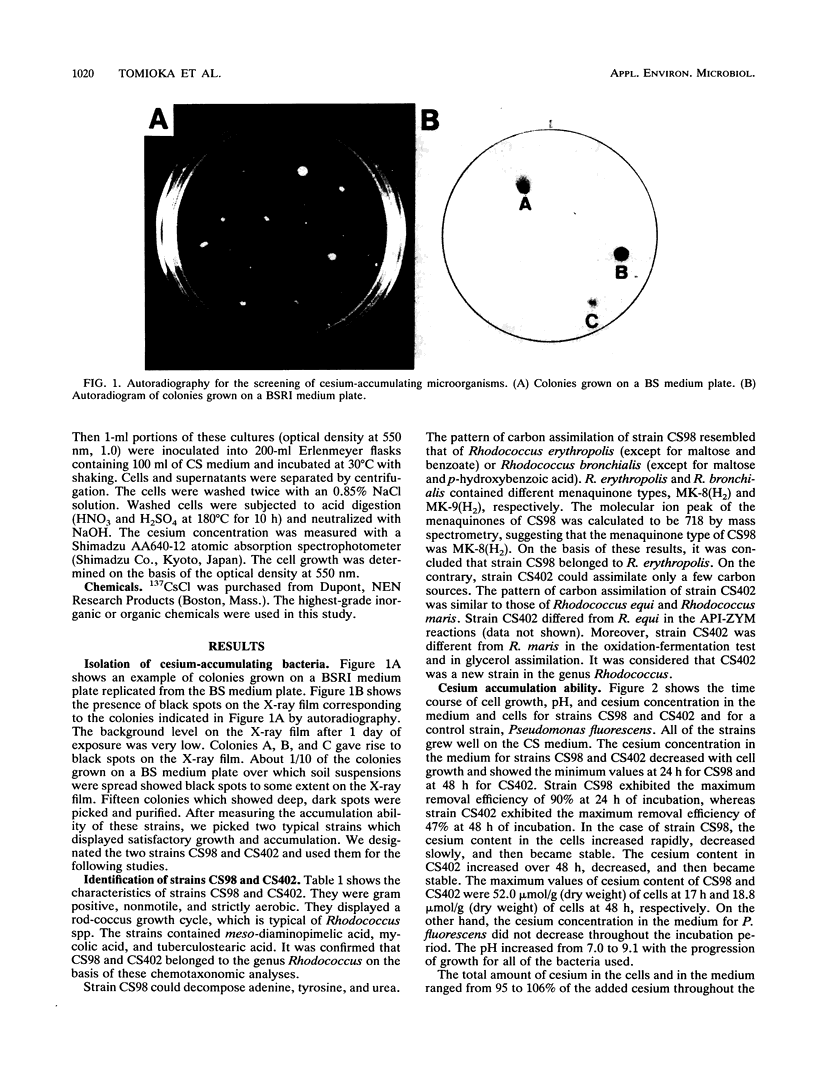
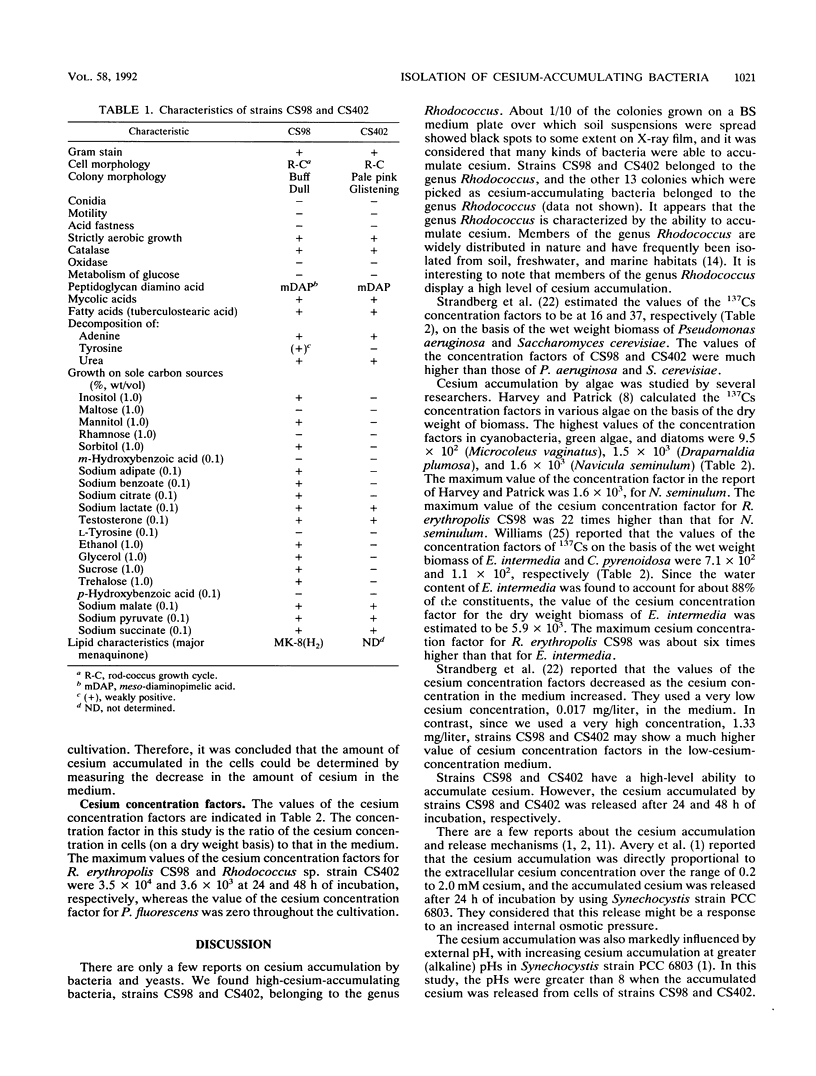
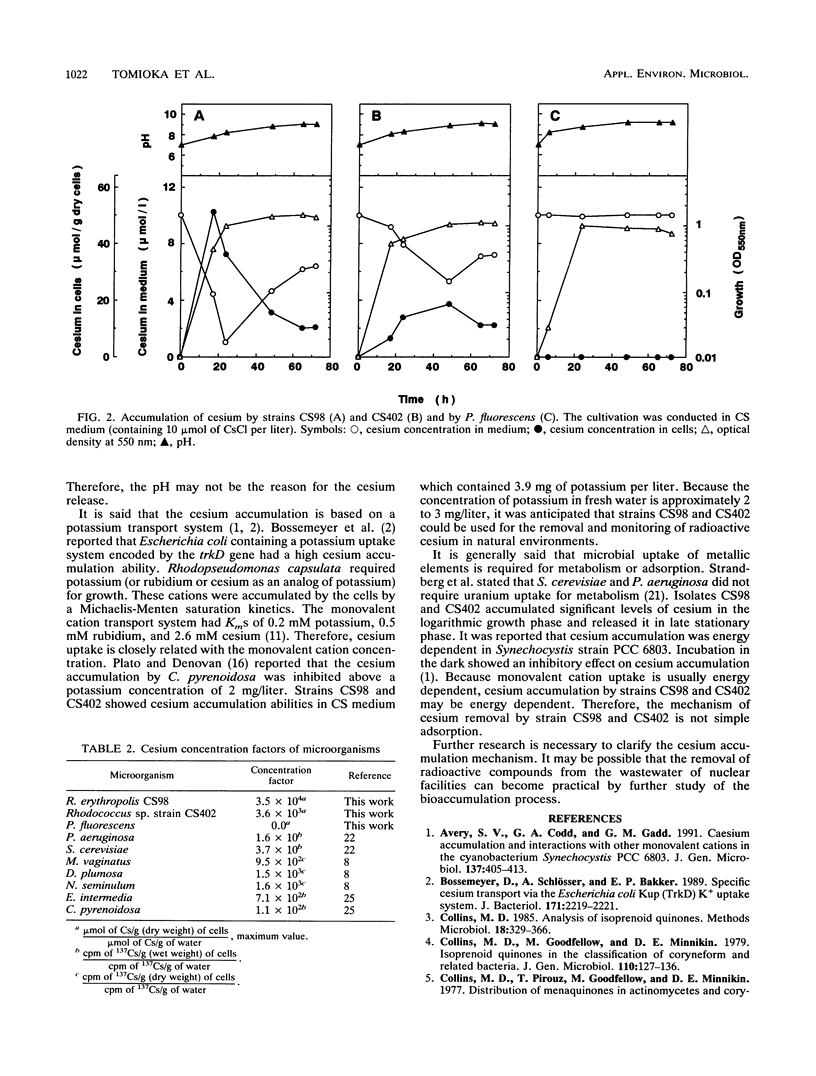
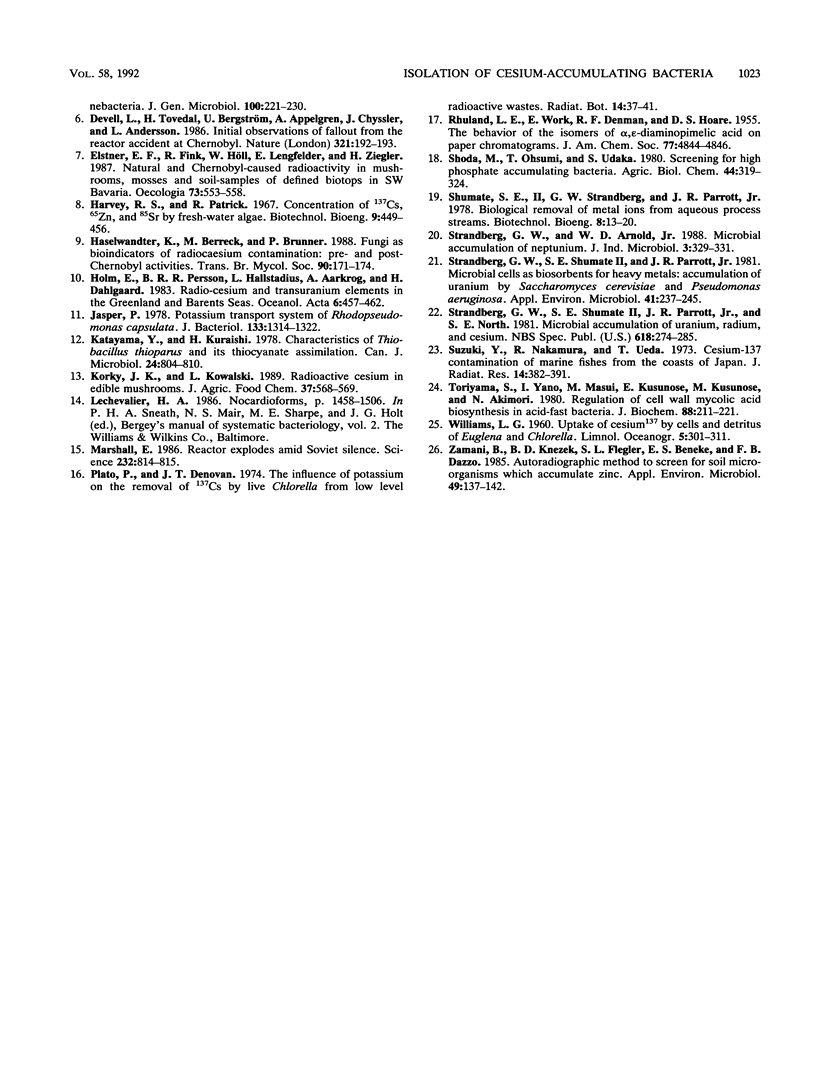
Images in this article
Selected References
These references are in PubMed. This may not be the complete list of references from this article.
- Bossemeyer D., Schlösser A., Bakker E. P. Specific cesium transport via the Escherichia coli Kup (TrkD) K+ uptake system. J Bacteriol. 1989 Apr;171(4):2219–2221. doi: 10.1128/jb.171.4.2219-2221.1989. [DOI] [PMC free article] [PubMed] [Google Scholar]
- Collins M. D., Goodfellow M., Minnikin D. E. Isoprenoid quinones in the classification of coryneform and related bacteria. J Gen Microbiol. 1979 Jan;110(1):127–136. doi: 10.1099/00221287-110-1-127. [DOI] [PubMed] [Google Scholar]
- Collins M. D., Pirouz T., Goodfellow M., Minnikin D. E. Distribution of menaquinones in actinomycetes and corynebacteria. J Gen Microbiol. 1977 Jun;100(2):221–230. doi: 10.1099/00221287-100-2-221. [DOI] [PubMed] [Google Scholar]
- Jasper P. Potassium transport system of Rhodopseudomonas capsulata. J Bacteriol. 1978 Mar;133(3):1314–1322. doi: 10.1128/jb.133.3.1314-1322.1978. [DOI] [PMC free article] [PubMed] [Google Scholar]
- Katayama Y., Kuraishi H. Characteristics of Thiobacillus thioparus and its thiocyanate assimilation. Can J Microbiol. 1978 Jul;24(7):804–810. doi: 10.1139/m78-135. [DOI] [PubMed] [Google Scholar]
- Marshall E. Reactor Explodes Amid Soviet Silence: As fallout spreads across Europe, Soviet officials grudgingly begin to release information about the worst reactor accident on record. Science. 1986 May 16;232(4752):814–815. doi: 10.1126/science.232.4752.814. [DOI] [PubMed] [Google Scholar]
- Strandberg G. W., Shumate S. E., Parrott J. R. Microbial Cells as Biosorbents for Heavy Metals: Accumulation of Uranium by Saccharomyces cerevisiae and Pseudomonas aeruginosa. Appl Environ Microbiol. 1981 Jan;41(1):237–245. doi: 10.1128/aem.41.1.237-245.1981. [DOI] [PMC free article] [PubMed] [Google Scholar]
- Suzuki Y., Nakamura R., Ueda T. Cesium-137 contamination of marine fishes from the coasts of Japan. J Radiat Res. 1973 Dec;14(4):382–391. doi: 10.1269/jrr.14.382. [DOI] [PubMed] [Google Scholar]
- Toriyama S., Yano I., Masui M., Kusunose E., Kusunose M., Akimori N. Regulation of cell wall mycolic acid biosynthesis in acid-fast bacteria. I. Temperature-induced changes in mycolic acid molecular species and related compounds in Mycobacterium phlei. J Biochem. 1980 Jul;88(1):211–221. [PubMed] [Google Scholar]
- Zamani B., Knezek B. D., Flegler S. L., Beneke E. S., Dazzo F. B. Autoradiographic method to screen for soil microorganisms which accumulate zinc. Appl Environ Microbiol. 1985 Jan;49(1):137–142. doi: 10.1128/aem.49.1.137-142.1985. [DOI] [PMC free article] [PubMed] [Google Scholar]



